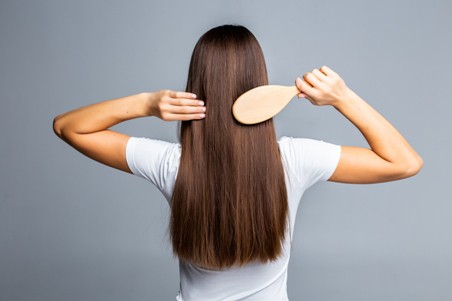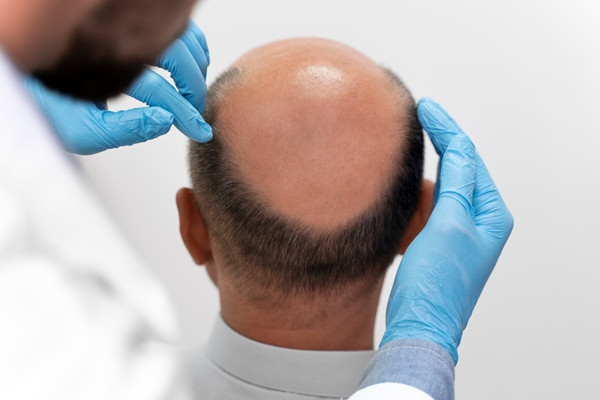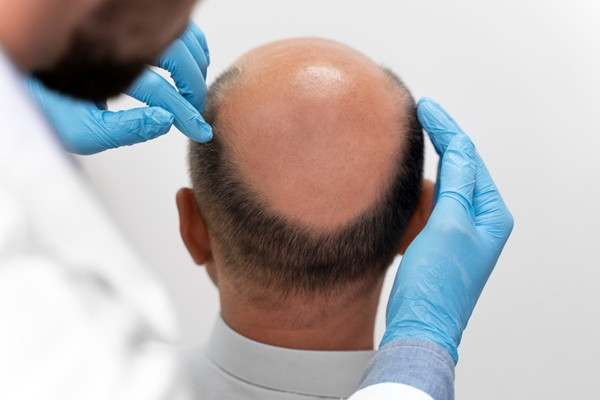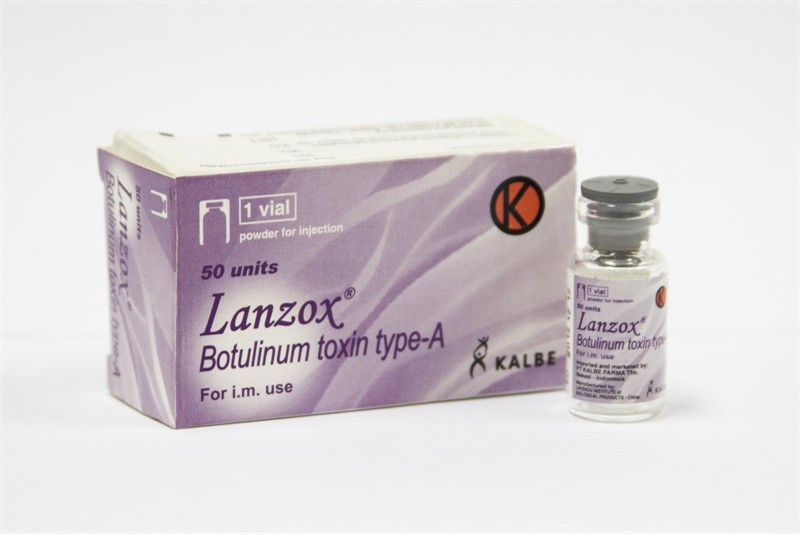
Alopesia memiliki pengaruh yang signifikan pada kualitas hidup. Ada tiga jenis umum alopesia non-sikatrik, yaitu androgenetic alopecia, telogen effluvium, dan alopecia areata. Androgenetic alopecia adalah jenis kerontokan rambut yang paling umum, yang dipicu oleh efek dihidrotestosteron pada folikel rambut yang mengarah ke kegagalan pertumbuhan rambut.
Telogen effluvium terjadi ketika banyak folikel rambut memasuki fase istirahat pada siklus pertumbuhan rambut yang memengaruhi wanita berusia antara 30-60 tahun, yang mengakibatkan kerontokan rambut tanpa rambut baru tumbuh. Mikronutrien (mineral dan vitamin) serta hormon, yaitu feritin, folat, zinc, hormon tiroid, vitamin B12, dan vitamin D dianggap sebagai komponen utama dalam pertumbuhan folikel rambut.
Kerontokan rambut difus diketahui sebagai salah satu gejala yang berhubungan dengan anemia defisiensi besi. Tercatat bahwa stres psikologis dan kekurangan zat besi adalah faktor penyebab paling umum dari telogen effluvium. Kadar feritin serum pada pasien telogen effluvium secara signifikan lebih rendah daripada grup kontrol dan berbanding terbalik dengan tingkat keparahan penyakit. Disfungsi tiroid dievaluasi pada pasien alopecia areata dan ditemukan antibodi tiroid meningkat pada wanita dengan progresivitas durasi penyakit. Kadar zinc serum juga secara signifikan lebih rendah pada pasien dengan rambut rontok dibandingkan dengan grup kontrol sehat.
Pada pasien pria dengan androgenetic alopesia, kadar zinc dan copper secara signifikan lebih rendah dari grup kontrol sehat. Pada pasien dengan alopecia areata dan vitiligo, kadar zinc serum jauh lebih rendah daripada grup kontrol sehat. Sebuah studi tentang vitamin B12 juga menyimpulkan bahwa kadar vitamin B12 rendah mungkin merupakan penyebab utama kerontokan rambut difus pada orang tua. Korelasi yang signifikan ditemukan antara defisiensi vitamin D dan onset dini androgenetic alopecia. Vitamin D memengaruhi folikel rambut normal, meningkatkan respons imun, dan menghambat proliferasi sel pada alopecia areata (usia antara 25-45 tahun).
Suatu studi retrospektif meneliti hubungan antara kadar feritin, hemoglobin (Hb), thyroid stimulating hormone (TSH), zinc, vitamin B12, dan vitamin D dengan kerontokan rambut difus kronik pada 300 wanita (usia 17-61 tahun) dan 70 kontrol wanita sehat (usia 20-57 tahun). Pasien rambut rontok (n=300) dibagi menjadi tiga grup berdasarkan usia; 17-32 tahun (n=166), 33-48 tahun (n=73), dan 49-61 tahun (n= 61). Grup kontrol diklasifikasikan berdasarkan umur yang mirip dengan grup pasien rambut rontok. Rentang normal dari parameter yang dipelajari adalah sebagai berikut: feritin (10-120 ng/ml), zinc (90-154 µg/dl), TSH (0,4–4,0 mIU/l), Hb (12-15,5g/l), vitamin B12 (200–900 ng/ml), vitamin D (20-50 ng/ml).
Dari studi tersebut, kadar feritin, TSH, dan Hb ditemukan secara signifikan berkurang (p <0,05) pada pasien wanita berusia antara 17 hingga 32 tahun relatif terhadap grup kontrol. Pada wanita berusia antara 33-48 tahun, TSH ditemukan menurun secara signifikan (p <0,05), bersama dengan penurunan vitamin B12 yang signifikan. Penurunan TSH yang signifikan (p <0,05), vitamin B12 (P <0,05) dan vitamin D (p <0,05) diamati pada kelompok usia yang lebih tua (49-61 tahun) relatif terhadap grup kontrol. Studi ini menunjukkan adanya hubungan antara kadar feritin, TSH, Hb, vitamin B12, dan vitamin D di antara wanita dalam kelompok usia yang berbeda dengan kerontokan rambut.
Karena banyak wanita dengan hiperandrogenisme juga mengalami kerontokan rambut, tim ahli dari Androgen Excess and PCOS (AE-PCOS) Society juga menyarankan untuk melakukan pengukuran hormon androgen yang mencakup pengukuran total testosterone dan free testosterone untuk kerontokan rambut. Selain itu, pengukuran kadar serum dari zat besi, vitamin D, zinc, profil tiroid, dan prolaktin mungkin berguna untuk mengeksklusi dan mengobati kondisi lain yang mungkin memengaruhi kerontokan rambut.
Gambar: www.freepik.com
Referensi:
- Farah HS, Hajleh MNA, Shalan N, Assi GA, Alqaisi T. The association between the levels of Ferritin, TSH, Zinc, Hb, vitamin B12, vitamin D and the hair loss among different age groups of women: A retrospective study. IJPR. 2021;13(2):143-8.
- Carmina E, Azziz R, Bergfeld W, Escobar-Morreale HF, Futterweit W, Huddleston H, et al. Female pattern hair loss and androgen excess: A report from the multidisciplinary androgen excess and PCOS committee. J Clin Endocrinol Metab. 2019;104(7):2875–91.











